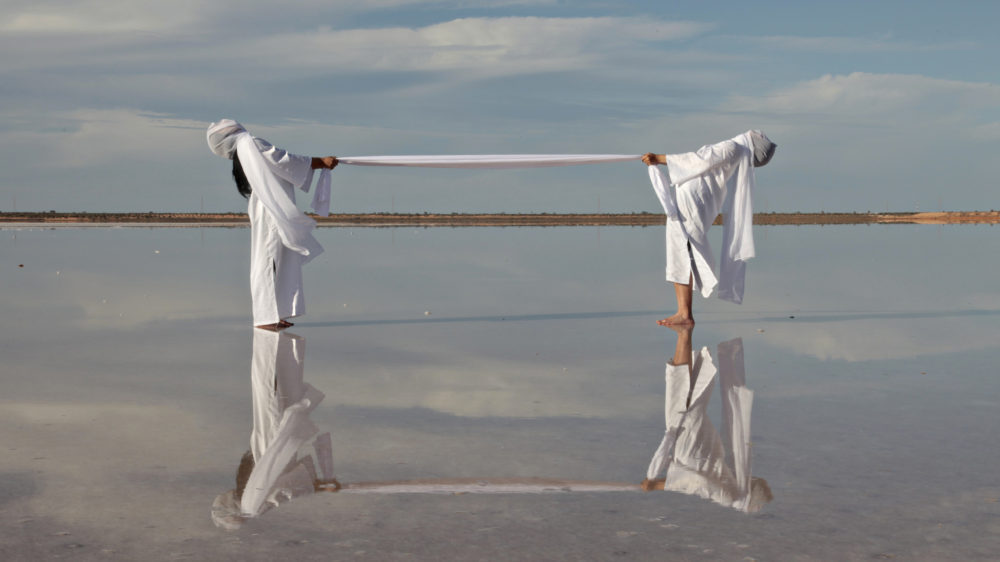Images Courtesy of Honolulu Biennial Foundation
To get around Honolulu while performing her curatorial duties, Ngahiraka Mason has been taking the bus. “In New Zealand, people are far more direct,” she says, discussing the city’s social norms on public transportation—and in the art scene. “In Hawai‘i, some people would rather stand than speak up and take a seat. This place is so diverse, but there’s an odd conservatism about Hawaiʻi that I haven’t quite wrapped my mind around.” As half of Honolulu Biennial’s curatorial team, which has spent two years finding and developing contemporary art, Mason remains philosophical. “This place is not as generous as it seems, especially to artists. But as organizers, how do we lift people up?”
The Honolulu Biennial promises to be an event unlike any Hawaiʻi has seen. Founded by Isabella Hughes, Kóan Jeff Baysa, and Katherine Tuider, the event—which takes place from March 8 to May 8 and boasts 34 artists, seven venues, and numerous public and private donors—has been in the planning phase for five years. It aims to be on par with the best in the world, like Art Basel in Miami, or the historic Venice Biennale, begun in 1895. Such events have become de rigueur travel destinations for wealthy arts patrons, contemporary artists, curators, academics, and the public. At their worst, biennials are debaucherous parties that commodify creative work. But at their best, they represent the transcendence of art, and the transnational exchange of ideas in free societies.
For 21 years, Mason was the curator of indigenous art at the Auckland Art Gallery, Toi o Tāmaki, where she broadened “indigenous art” to its most expansive conception. In 2013, the gallery featured dark, influential paintings by Māori minimalist Ralph Hotere, as well as temporary paper installations by architects Michael Lin and Atelier Bow-Wow. Mason defrays attention and bristles at the idea of celebrity curators, which have become normative in well-funded contemporary art. Two years ago, for a change of pace, Mason moved to Honolulu with her partner Manulani Meyer, an academic and activist. For the founders of Honolulu Biennial, Mason was an obvious pick for curator.
Together with Fumio Nanjo, the biennial’s curatorial director and the director of Tokyo’s Mori Art Museum, Mason has selected artists from cultures linked by the Pacific Ocean. The biennial will include mixed media provocations by Yayoi Kusama from Japan, reused-material installations by Choi Jeong Hwa from Korea, and digital projected displays by Māori artist Lisa Reihana from New Zealand. Mason and Nanjo have intentionally picked several artists and collectives of Polynesian descent, in part to rectify the historic devaluing of living indigenous artists in Western museums. “We’re making indigenous artists central to the presentation,” Mason says.
The Honolulu Biennial is free for all to attend. Its sites are historic and urban, such as the sprawling 40,000-square-foot indoor space that was formerly a Sports Authority, and the iconic IBM Building, both set in the developing district of Kakaʻako. Other sites include Honolulu Hale, Foster Botanical Garden, The Arts at Marks Garage, Bishop Museum, and the Honolulu Museum of Art. “Anything that makes us talk to each other is a starting point,” Mason says of contemporary art. “Otherwise you’re just talking to yourself on the bus.”
Disclosure: Sonny Ganaden serves on the Honolulu Biennial Foundation board and FLUX Hawaii’s publishing company is a sponsor.
For more information, see the public program schedule and site map below.





